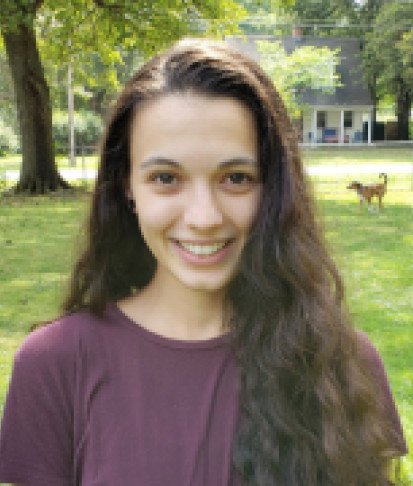Salvia divinorum, often simply called “salvia,” is a plant in the mint family native to certain regions of Mexico. Mazatec shamans traditionally used it in spiritual and healing ceremonies. Salvia is known for its potent hallucinogenic properties, attributed primarily to its active compound, salvinorin A.
A “salvia trip” refers to the intense, short-lived psychedelic experiences resulting from smoking dried leaves or chewing fresh salvia leaves. Some describe these trips as life-changing or mystical. Others, however, find them disorienting or distressing.
- Salvia’s psychoactive ingredient, salvinorin A, uniquely interacts with kappa-opioid receptors in the brain, causing intense but brief hallucinations.
- A salvia trip commonly includes vivid visual distortions, auditory changes, and dissociation lasting from several minutes up to an hour, depending on the ingestion method.
- Modern recreational salvia use does have risks, making preparation, harm reduction strategies, and awareness of legal status essential.

The science behind the trip: Salvinorin A and how it works
Salvia divinorum’s distinct effects come from its active compound, salvinorin A. Unlike the classic psychedelics (LSD, psilocybin, mescaline) that act primarily on serotonin (5-HT2A) receptors, salvinorin A is a potent agonist of the brain's kappa-opioid receptor (KOR). [1] This unique action explains why a salvia trip feels so much different than that of, for example, an LSD trip.
When salvinorin A binds to KOR, it alters perception, mood, and cognition. [2] Salvinorin A's extreme potency means small doses can produce strong effects, making salvia one of the most powerful naturally occurring hallucinogens. This explains the typically divergent, intense, brief salvia trips. [3]
What does a salvia trip feel like?
The experience of a salvia trip is dependent on the drug, set, and setting. A salvia trip usually alters perception and consciousness. Commonly reported experiences include: [3]
- Visual distortions: People experience changes in color and light, elaborate visions, or see kaleidoscopic patterns. Some describe geometric shapes, entire landscapes morphing, or other changes to the actual scenery around them. This might even culminate in full-blown visual hallucinations.
- Auditory hallucinations: Less frequently experienced than visual changes, auditory distortions may include echoes or sounds that seem amplified or distant.
- Dissociative experiences: These are sometimes referred to as out-of-body experiences. People using salvia might feel detached from reality or themselves, observing their actions externally or temporarily losing their sense of self.
- Time distortion: People experience significant time distortions, especially when taken at higher doses. For example, time slows down.
These effects, however, can be especially disorienting and frightening for those who try salvia for the first time. When smoked, the most commonly used method, the rapid onset results in an intense but brief trip. [4]
How it differs from other psychedelics
Compared to substances like DMT, LSD, or psilocybin, salvia differs notably:
- Mechanism of action: Salvinorin A targets kappa-opioid receptors, unlike classic psychedelics, which act on serotonin receptors. [1]
- Duration: Salvia trips are significantly shorter than those of hallucinogenic drugs. While DMT also provides brief experiences, LSD and psilocybin effects persist for hours. [5]
- Nature of hallucinations: Salvia’s dissociative sensations can feel more unsettling than the reportedly more euphoric, introspective journeys typical of LSD or psilocybin. With salvia, there is often a complete break from reality, whereas with other psychedelics, this is usually not the case.
How long a salvia trip lasts: Duration and phases
The duration of a salvia trip varies significantly based on ingestion method, primarily smoking or chewing fresh leaves (quid method). [1]
- Smoking takes effect within 30 seconds to 2 minutes, peaking around 5–10 minutes. The primary effects subside after about 20–30 minutes, with residual effects possibly lasting up to an hour. [6]
- Chewing fresh or rehydrated leaves and holding them in the mouth results in a slower onset (10–15 minutes). Peak effects occur around 30 minutes, subsiding gradually over 45 minutes to an hour. [6]
The rapid transition, especially when smoked, can be jarring, emphasizing the need for a safe, controlled environment.
Cultural and historical context of salvia use
Salvia divinorum’s use by the Mazatec people of Oaxaca, Mexico, dates back to the 16th century. During their ceremonial practices, the Mazatec people chewed fresh leaves or drank teas for healing and divination. These rituals facilitated communication with spirits and helped them gain personal insights. [7]
This indigenous practice contrasts with today's recreational salvia use. Some people honor salvia’s traditional context; however, many use it recreationally without understanding its historical significance or spiritual roots. Such practices ultimately create ethical tension in discussions about the recreational use of traditional and sacred substances.
Risks, side effects, and psychological considerations
Despite its legality in some regions, salvia is not risk-free. Side effects and risks of salvia use include: [3]
Mental health effects
- Nervousness/anxiety
- Amnesia
- Auditory and visual hallucinations
- Delusions
- Dissociation or detachment from the body
- Confusion
- Paranoia
- Psychosis
- Time distortion
Physical side effects
- Pain relief
- Uncoordinated movements
- Increased body temperature (hyperthermia)
- Throat and lung irritation
- Rapid heart rate
- Impaired speech
- Uncontrollable laughter
Long-term risks
Long-term effects, although understudied, of salvia use might include mental health concerns like paranoia and anxiety, especially for those prone to mental health conditions. Like other psychedelics, salvia does not create dependence, although this may still occur in some people. [3]
Hallucinogen persisting perception disorder (HPPD), where people experience brief or persistent flashbacks or hallucinations, has also been described as a long-term effect of salvia use. [8]
Regarding overdoses, to date, there have been no reported deaths from salvia. However, as salvia impairs thoughts and emotions, it can cause loss of contact with external reality, impair judgment, and cause risk-taking. [9]
Harm reduction: How to prepare and stay safe
Adhering to basic harm reduction strategies can minimize negative experiences:
- Use salvia in a calm, familiar space, free from physical hazards.
- Partner with a trip sitter. A sober, trusted friend can help manage distress, prevent injury, and provide reassurance during overwhelming experiences.
- Start with low doses, especially when smoking, and wait to gauge effects before re-dosing.
- Avoid salvia if feeling anxious, depressed, or stressed, since your mental state influences the experience with salvia, as it does with many substances.
- Source salvia responsibly, ensuring legal compliance and product purity to avoid additional risks.
Legal considerations
Salvia's legal status differs significantly across the U.S. and globally. It is prohibited in Australia and certain European regions, while various U.S. states have specific laws. Due to constant legal changes, it is crucial to check local government or health authority websites before using them.




-guide-detail.jpg?v=1722501675)